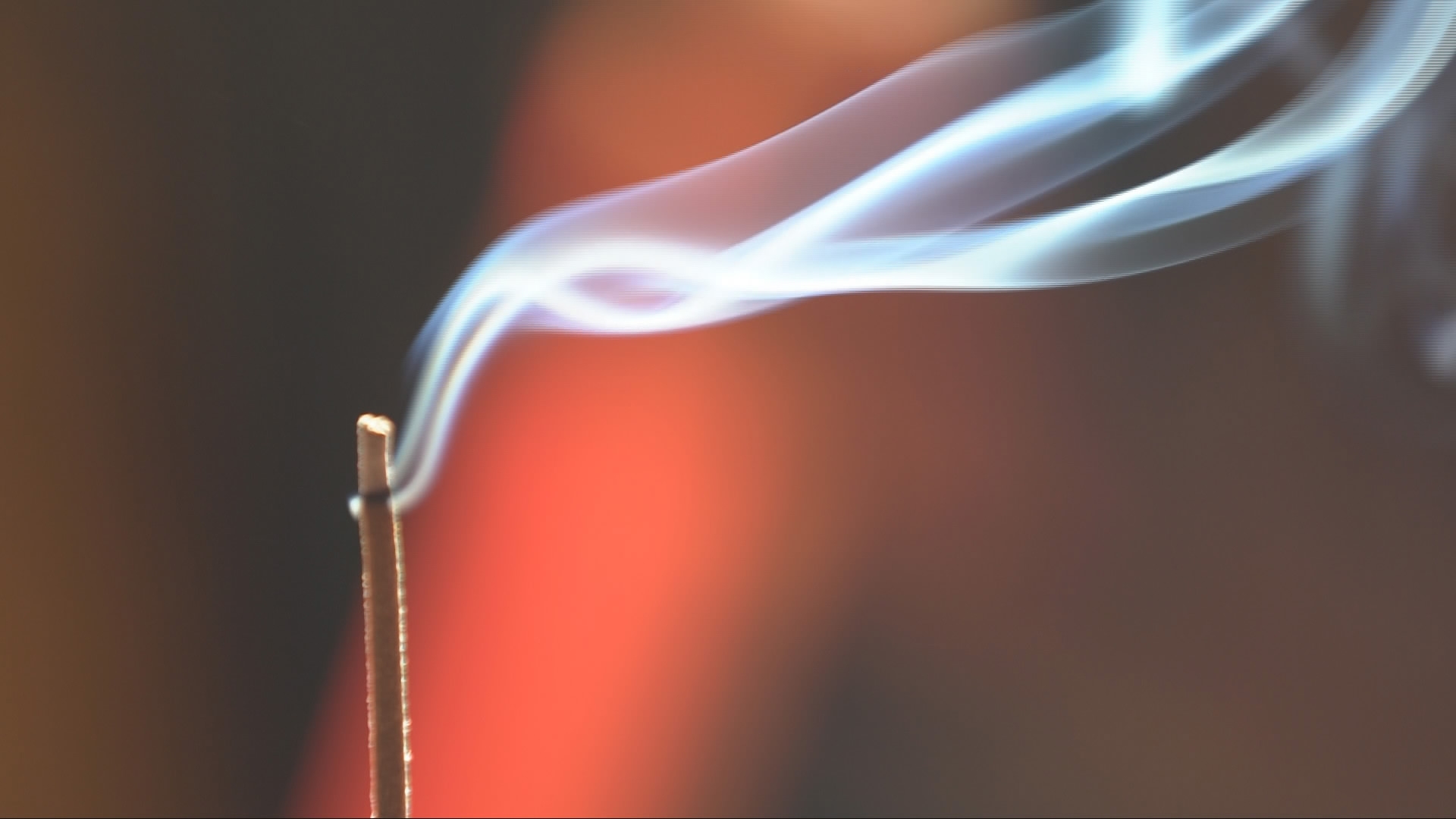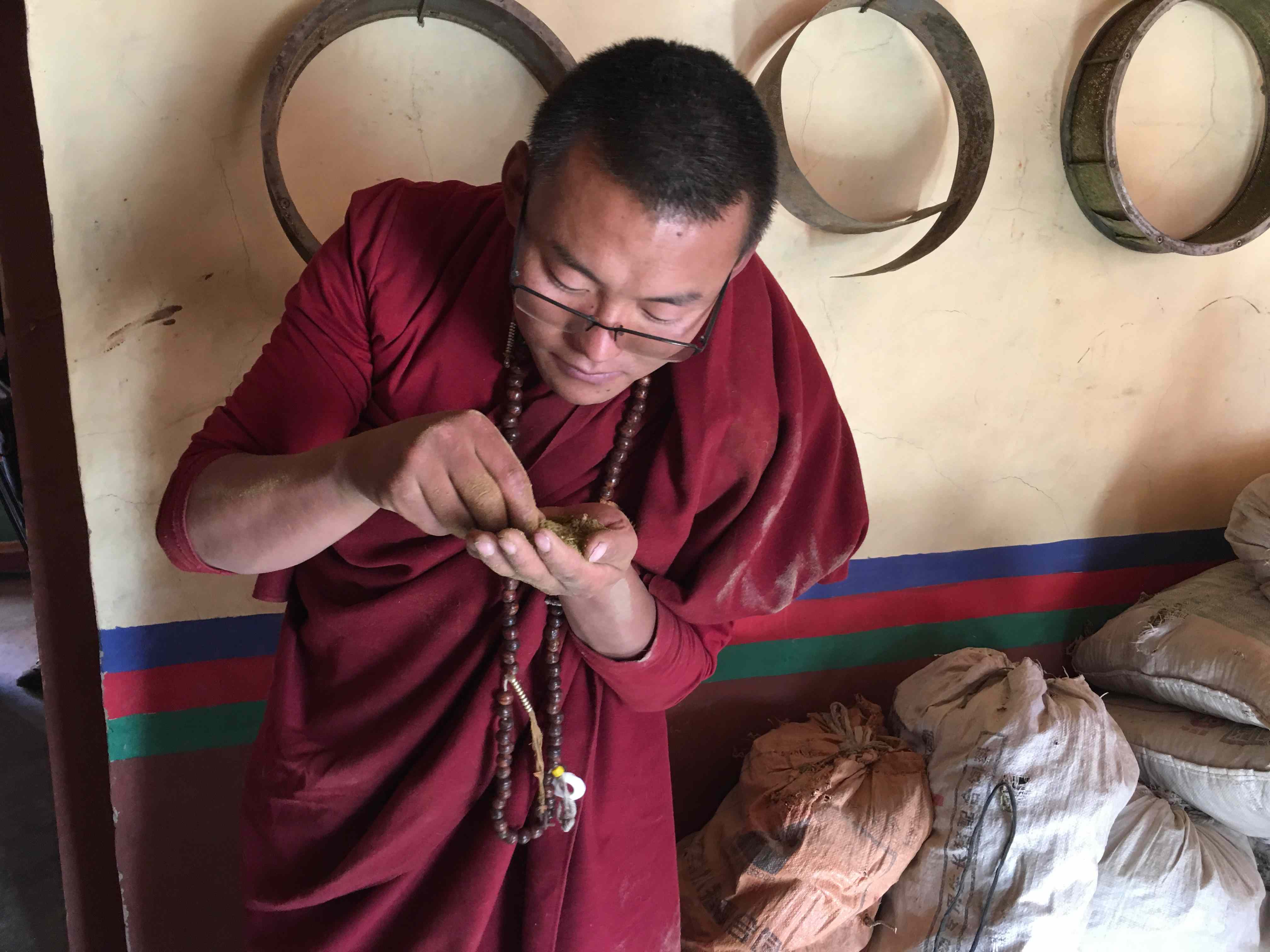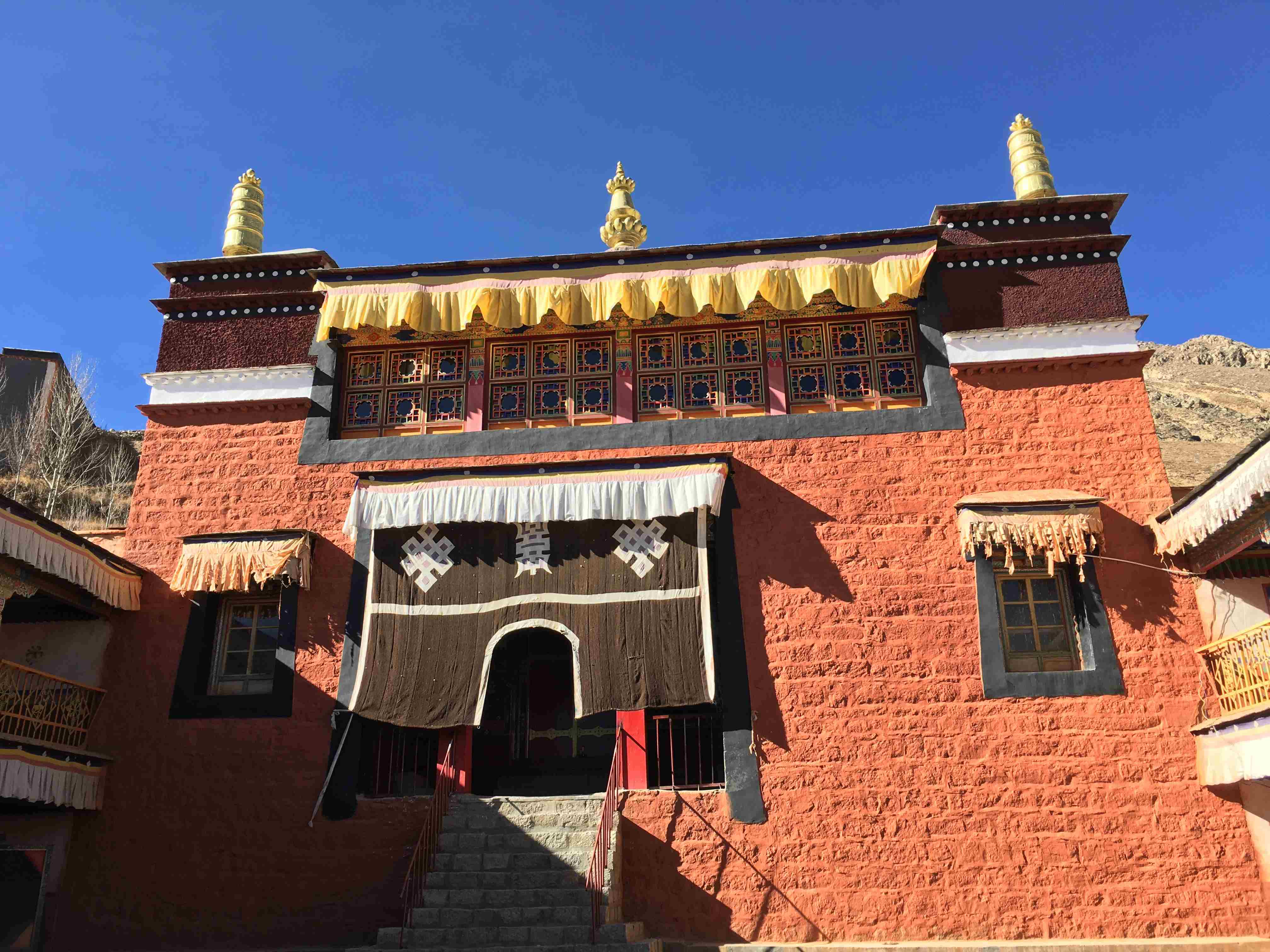
Culture
13:05, 27-Dec-2017
Incense revival in Tibet benefits monastery and people in need
By Yang Jinghao, Luo Caiwen

Incense burning is an important ritual in southwest China's Tibet Autonomous Region. No matter if it is in monasteries, or local Tibetans’ homes, one will regularly see the smoke of incense and smell its aroma. At the Dalhathubten Monastery, which is located in Xigaza, the second largest city of Tibet, visitors are able see how the popular item is produced.
The history of making Tibetan incense in this centuries-old monastery can be traced back to more than 400 years ago. However, this craft is no longer used.
Kelsang Tsring, monk and manager of the monastery, told CGTN that they retrieved the recipe by looking up the sutras with related records.
In July, a small factory was set up in the monastery to revive the craft.

Kelsang Tsring looks at the powder made out of different kinds of herbs. /CGTN Photo
Kelsang Tsring looks at the powder made out of different kinds of herbs. /CGTN Photo
“The main purpose is to support the monastery’s own development, and we also hope we can help some people in need this way,” said Tsedan Tashi, director of the monastery’s management committee.
Kelsang explained that what makes their incense special is the ingredients: Wild herbs from the nearby mountains and farmlands, collected by themselves. He said the incense, made with more than 180 herbs, releases a pleasant aroma and is also good for health and well being.
“Even some Tibetan medicine plants get raw materials from us,” said Kelsang.

Employees pack the Tibetan incenses. /CGTN Photo
Employees pack the Tibetan incenses. /CGTN Photo
The factory currently employs 12 local villagers from impoverished families. Eight of them, who are also disabled, are responsible for the production and packing of the incense. The rest gather herbs and do deliveries. They all earn about 130 yuan (about 20 US dollars) every day.
“I can earn more than 3,000 yuan (about 460 US Dollars) here. Now I have become the breadwinner of the family,” said Yudron, an elderly villager.
The market has reacted favorably to the monastery’s attempt to revive this craft. Nine different kinds of incenses are sold to different cities in the autonomous region, and have even been sold as far as northeastern Heilongjiang Province.
In the first four months of production, the factory made a profit of more than 170,000 yuan (26,000 US dollars), far more than what was expected.

A factory was set up here in July to produce Tibetan incense. /CGTN Photo
A factory was set up here in July to produce Tibetan incense. /CGTN Photo
Tsedan said that, along with its own development, some of the profits will be used to help local college students from poor families.
Despite its 500-year history, Dalhathubten is not a large monastery in the region and it only has 33 monks. But Kelsang says they have great ambition.
Off to a good start with this initiative, the monastery hopes it can help more people with their incense – an important representation of Tibetan culture.

SITEMAP
Copyright © 2018 CGTN. Beijing ICP prepared NO.16065310-3
Copyright © 2018 CGTN. Beijing ICP prepared NO.16065310-3